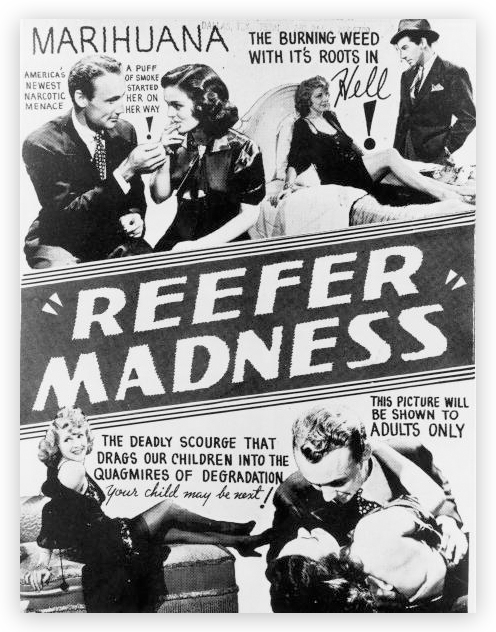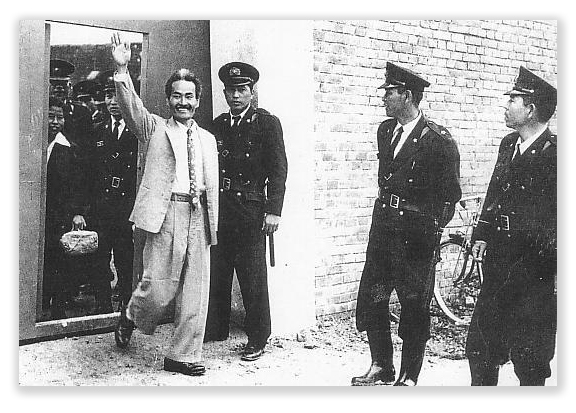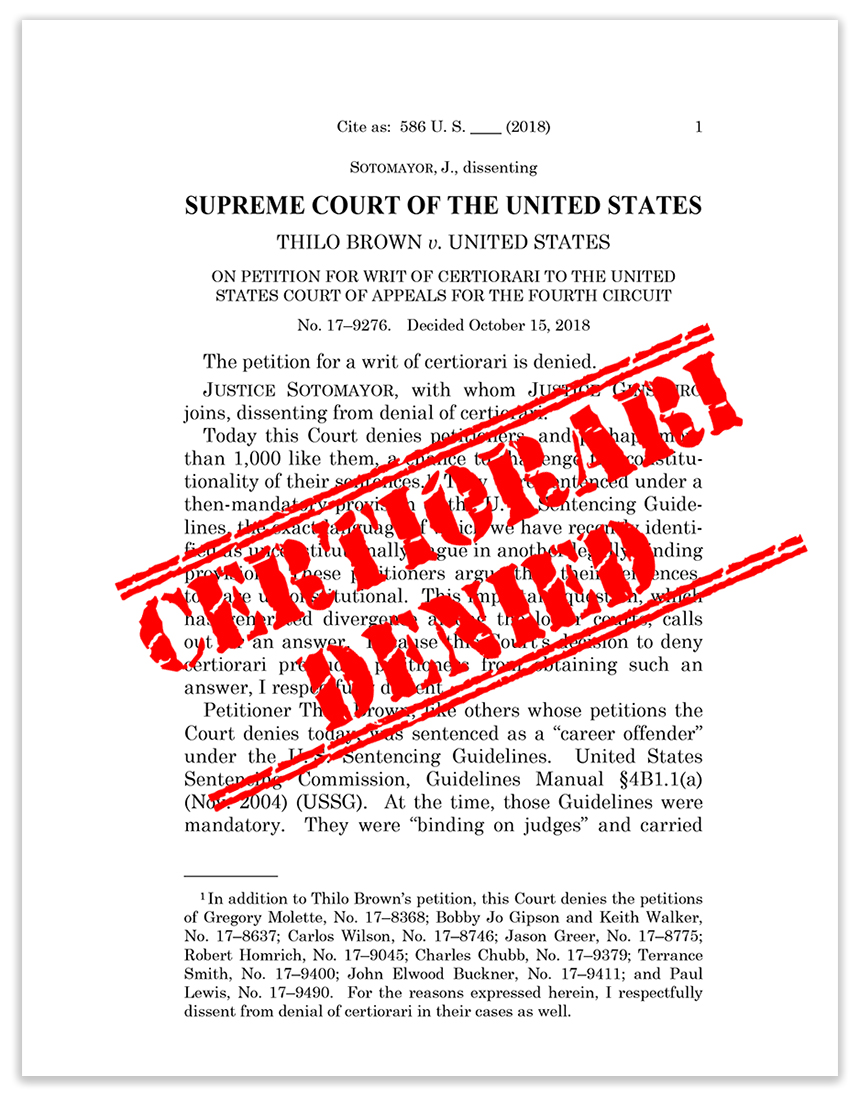We post news and comment on federal criminal justice issues, focused primarily on trial and post-conviction matters, legislative initiatives, and sentencing issues.

NEITHER FISH NOR FOWL
 Everyone who paid attention in high school government class knows there are three branches of the federal government, the legislative (Congress), the executive (President and the agencies), and the judicial.
Everyone who paid attention in high school government class knows there are three branches of the federal government, the legislative (Congress), the executive (President and the agencies), and the judicial.
And then there’s the United States Sentencing Commission. It is part of the judicial branch, but it is part legislative, too, answering to Congress (which has the right to pass on any amendments, and veto those of which it disapproves). Legal scholars might say it’s neither fish nor fowl.
In 2017, Jim Harvey pled guilty to felon-in-possession of a firearm. Under the Sentencing Guidelines, a defendant convicted of a 18 USC 922(g)(1) offense starts with a base offense level of 14, but that level increases to 20 under USSG § 2K2.1(a)(4) or (6) if he or she has a prior conviction for a “controlled substance offense.” At sentencing, the district court decided that Jim’s 17-year-old Tennessee conviction for selling or delivering cocaine was a “controlled substance offense” under the Guidelines.
Jim objected because the Tennessee statute criminalized both sale and delivery of cocaine. Under state law, “delivery” of drugs includes the “attempted transfer from one person to another of a controlled substance.” Jim argued that the prior conviction was not a controlled substance offense because the Guidelines’ definition of “controlled substance offense” does not include “attempt” crimes.
Jim was right that the Guidelines themselves do not include “attempt” offenses. However, each of the Guidelines comes with its own handy commentary and application notes, helpful annotations by the Sentencing Commission to aid users in what it considers the “proper” way to apply each Guideline. The commentary at the end of USSG § 4B1.2(b), which (among other things) defines a controlled substance offense for Guidelines purposes, directs that the definition of controlled substance offense in the text necessarily includes ‘the offenses of aiding and abetting, conspiring, and attempting to commit such offenses.’
 Not so, Jim argued. The Guidelines text itself says nothing about attempt, and the Sentencing Commission, he complained, has no power to add attempt crimes to the list of offenses in § 4B1.2(b) through its own commentary. It would be like West Publishing adding a note after the bank robbery statute saying that bank robbery includes the offense of shaking a few quarters out of your kid’s piggy bank for bus fare.
Not so, Jim argued. The Guidelines text itself says nothing about attempt, and the Sentencing Commission, he complained, has no power to add attempt crimes to the list of offenses in § 4B1.2(b) through its own commentary. It would be like West Publishing adding a note after the bank robbery statute saying that bank robbery includes the offense of shaking a few quarters out of your kid’s piggy bank for bus fare.
Last Thursday, the 6th Circuit agreed with Jim.
The Guidelines commentary, the Court said, “never passes through the gauntlets of congressional review or notice and comment. That is generally not a problem, the Supreme Court tells us, because such commentary has no independent legal force — it serves only to interpret the Guidelines’ text, not to replace or modify it. Courts need not accept an interpretation that is “plainly erroneous or inconsistent with” the corresponding guideline.
 But the problem comes where the commentary does more than just interpret, but instead tries to bootstrap the Guideline into saying something more than what Congress approved. In this case, the commentary in question does not “interpret,” but rather supplements. The Commission was perfectly capable of adding “attempt” to the Guideline itself. Clearly, the 6th Circuit noted, the “Commission knows how to include attempt crimes when it wants to — in subsection (a) of the same guideline, for example, the Commission defines “crime of violence” as including offenses that have “as an element the use, attempted use, or threatened use of physical force against the person of another.”
But the problem comes where the commentary does more than just interpret, but instead tries to bootstrap the Guideline into saying something more than what Congress approved. In this case, the commentary in question does not “interpret,” but rather supplements. The Commission was perfectly capable of adding “attempt” to the Guideline itself. Clearly, the 6th Circuit noted, the “Commission knows how to include attempt crimes when it wants to — in subsection (a) of the same guideline, for example, the Commission defines “crime of violence” as including offenses that have “as an element the use, attempted use, or threatened use of physical force against the person of another.”
To make attempt crimes a part of 4B1.2(b), the Commission did not interpret a term in the guideline itself, but instead used Application Note 1 to add an offense not listed in the Guideline. Application notes, the Court held, are to be “interpretations of, not additions to, the Guidelines themselves.” If that were not so, the institutional constraints that make the Guidelines constitutional in the first place — congressional review and notice and comment — would lose their meaning.
Jim’s case was remanded for resentencing.
United States v. Havis, 2019 U.S. App. LEXIS 17042 (6th Cir. June 6, 2019)
– Thomas L. Root


 Last week, the 4th Circuit suggested that maybe we have it wrong. Lamont Vanderhorst’s district court denied his Rule 36 motion to correct a clerical error in his Presentence Report. The PSR characterized one of his state convictions as “conspiracy to sell and deliver cocaine.” In fact, the conviction was “conspiracy to traffick [sic] cocaine by transportation.”
Last week, the 4th Circuit suggested that maybe we have it wrong. Lamont Vanderhorst’s district court denied his Rule 36 motion to correct a clerical error in his Presentence Report. The PSR characterized one of his state convictions as “conspiracy to sell and deliver cocaine.” In fact, the conviction was “conspiracy to traffick [sic] cocaine by transportation.” 





 The government “has already been given one full and fair opportunity to offer whatever support for the
The government “has already been given one full and fair opportunity to offer whatever support for the 













